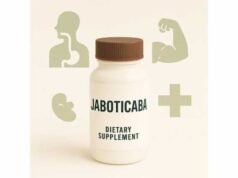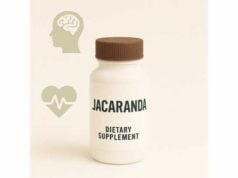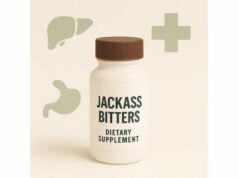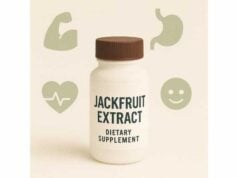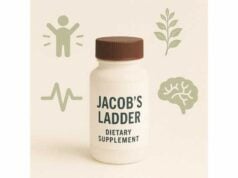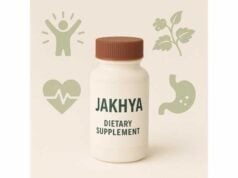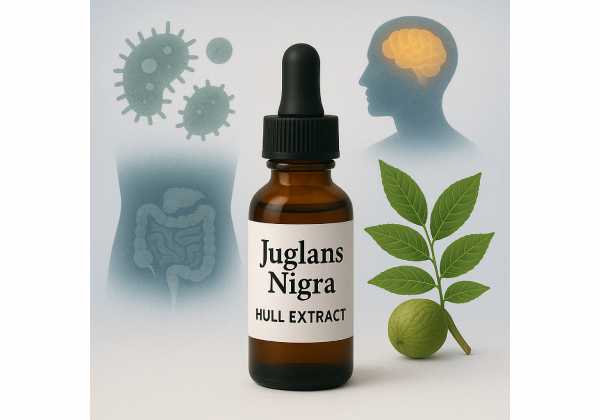
Juglans nigra hull extract—commonly called black walnut hull extract—comes from the green outer husk that surrounds the nut of the black walnut tree. This botanical is rich in naphthoquinones (notably juglone), tannins, phenolic acids, and flavonoids. Traditionally, the hull has been used for skin cleansing, dyeing, and as a folk remedy for minor infections. Today, it appears in niche skincare and oral-rinse formulas for its astringent, antimicrobial, and stain-producing properties. The same compounds that make it effective can also irritate skin or stain it brown if used carelessly, so smart handling matters. This guide explains how the extract works, where it helps (and where it does not), practical ways to use it topically, sensible concentration ranges, and who should avoid it. You will also find a clear-eyed look at the strength of the research so you can separate historical claims from what modern evidence actually supports.
Quick Overview
- Astringent and antimicrobial activity may help with oily, rough, or flaky skin on body areas when used in low-strength topicals.
- Potential to reduce malodor and biofilm in foot care or scalp tonics; stains skin and fabrics at higher strengths.
- Typical topical use levels: 0.1–1.0% extract in leave-ons; up to 2% in short-contact cleansers or rinses.
- Avoid oral self-medication; internal use lacks reliable human evidence and carries toxicity risk.
- People with nut allergy, highly sensitive skin, pregnancy, or children should avoid or use only with professional guidance.
Table of Contents
- What is Juglans nigra hull extract?
- Evidence-backed benefits and limits
- How to use it topically
- Dosage and formulation examples
- Safety, side effects, and who should avoid
- Research status and what we still need
What is Juglans nigra hull extract?
Source and composition. The “hull” is the green outer husk that surrounds each black walnut. When the husk is extracted—typically with water, alcohol, or hydro-glycolic solvents—the resulting liquid contains juglone (5-hydroxy-1,4-naphthoquinone), tannins, phenolic acids (e.g., gallic, ellagic), flavonoids, and trace terpenoids. These families of molecules give the extract its hallmark traits: astringency, pigmentation (brown staining), and broad antimicrobial activity in laboratory settings.
How it works (mechanisms that matter in practice).
- Astringency and keratolytic “tightening.” Tannins cross-link surface proteins, creating a temporary tightening effect. On rough or flaky areas, this can smooth feel for a short time.
- Antimicrobial and antibiofilm actions. Juglone and related naphthoquinones can disrupt bacterial and fungal growth in vitro. This underlies the use of hull extract in traditional washes for feet, nails, and scalp where odor and biofilm can be issues.
- Pro-oxidant/antioxidant duality. Juglone can cycle between oxidized and reduced forms, generating reactive oxygen species at higher doses. At low topical levels and short contact times, this may contribute to surface cleansing; at higher or prolonged exposure it can irritate living tissue.
- Pigmenting behavior. The extract readily stains skin, nails, and fabrics via quinone-protein interactions—useful in natural dyeing, undesirable in most cosmetics if unmanaged.
Forms you’ll see.
- Hydroalcoholic tinctures (strongest; highest staining and irritation risk).
- Water/glycol extracts (gentler; better for leave-on skincare at low percentages).
- Powdered extracts standardized to juglone or total phenolics (used by formulators).
- Soaps and short-contact rinses where color and astringency are acceptable.
What it is not. Black walnut hull extract is not a proven internal antiparasitic or a cure for fungal nail infections by itself. It does not replace prescription treatments. Many bold historical claims remain untested in rigorous human trials.
Evidence-backed benefits and limits
1) Antimicrobial support in surface care (with caveats). In cell and model systems, juglone and black walnut extracts inhibit growth and virulence factors of Staphylococcus aureus and other microbes. Practically, this suggests a role in short-contact cleansers, foot soaks, or scalp tonics formulated at low strengths. The effect size varies by extraction method, cultivar, and concentration. It’s not a standalone cure for infections; think of it as a supportive hygiene ingredient.
2) Astringent effect for oily or rough body skin. Tannin-rich extracts transiently tighten and mattify. Users often apply a diluted toner or rinse to areas like the back, chest, or feet. Because astringency can also dry or irritate, the best outcomes come from brief contact, followed by a bland moisturizer.
3) Odor control and biofilm disruption. In malodor-prone zones (feet, footwear interiors), juglone-containing rinses may reduce odor when used a few times weekly, particularly if combined with surfactants and chelators that remove sweat residues and minerals.
4) Nail and scalp appearance. The extract’s pigment can visually mask discoloration on nails or scalp scale—but it also stains. In scalp care, low-dose aqueous extracts may reduce flake adherence and excess oil, yet users should patch test first.
Limits to keep in mind.
- Skin staining is common above low concentrations or with long contact times.
- Irritation increases with stronger alcohol content or occlusion.
- Evidence gaps: Most data are in vitro, in ex vivo models, or animal studies. Well-controlled human trials for common consumer uses are limited.
- No robust internal evidence: Historical antiparasitic claims are not supported by high-quality clinical trials. Do not ingest products unless prescribed by a licensed clinician for a specific indication.
Best-fit use cases today.
- Problem-solving foot care (odor, roughness).
- Short-contact cleansers for oily body areas.
- Targeted rinses/tonics in scalp routines, if tolerated.
- Artisanal soaps where natural brown coloration is desired.
How to use it topically
Before you start: patch testing is essential. Apply a pea-sized amount of your diluted product to the inner forearm twice daily for 3 days. Do not proceed if you develop persistent redness, itching, swelling, or tingling that worsens.
Face (generally not first choice). Facial skin is more reactive and staining is a concern. If you still wish to trial:
- Use a very low-strength aqueous extract (≤0.2%) in a rinse-off cleanser, 30–60 seconds contact.
- Follow with a bland moisturizer.
- Avoid concurrent acids, retinoids, or scrubs the same session to minimize irritation risk.
Back, chest, and body (better targets).
- Short-contact body wash: Use 0.5–2% extract in a surfactant base; lather on oily or rough zones for 1 minute, then rinse.
- Spot toning (leave-on, cautious): Apply 0.1–0.3% in an alcohol-free water/glycol base to clean, dry skin. Start 3×/week, increasing only if no irritation.
- Post-care step: Moisturize with a fragrance-free lotion to offset tannin-related tightness.
Foot care routine (odor, roughness).
- Soak: Dissolve 5–10 mL of a 1% liquid extract into 2 L warm water; soak 10 minutes.
- Rinse thoroughly and dry well (especially between toes).
- Follow with a urea-based cream at night to smooth rough skin.
Scalp routine (occasional).
- Pre-wash tonic: Massage 1–2 mL of a ≤0.5% aqueous extract into the scalp; leave 5–10 minutes; shampoo as usual.
- Do not use daily at first; start 1–2×/week and assess.
What to pair it with.
- Chelators (e.g., sodium phytate) and mild surfactants to help lift residues and reduce staining.
- Moisturizers (glycerin, panthenol, urea) to counter post-astringency dryness.
- Zinc PCA or niacinamide for oil balance in body formulations.
What to avoid the same day.
- Strong acids, retinoids, benzoyl peroxide, or abrasive scrubs on the same area.
- Occlusive wraps over freshly applied extract (increases irritation risk).
- White towels/clothes if you used higher strengths; staining is likely.
Dosage and formulation examples
Important context. There is no standardized “medical dose” for black walnut hull extract for internal use, and self-medication by mouth is not recommended due to toxicity concerns. The following guidance is topical/cosmetic only.
Topical concentration ranges (finished product).
- Rinse-off cleansers/soaps: 0.5–2.0% extract. Higher levels deepen color and increase staining; limit contact to ≤1 minute.
- Toners/leave-on body products: 0.1–0.5% aqueous extract; keep alcohol low or absent.
- Scalp pre-wash tonics: ≤0.5% extract; 5–10 minutes before shampoo.
- Foot soaks: Final bath concentration around 0.025–0.05% extract (e.g., 5–10 mL of a 1% liquid extract in 2 L water).
At-home usage amounts (approximate).
- Body wash: a palmful (≈ 5–7 mL), 1 minute contact, then rinse.
- Body toner: 1–2 mL over back/chest; 3×/week initially.
- Scalp tonic: 1–2 mL spread across the scalp; 1–2×/week.
DIY formulating notes (for experienced hobbyists).
- Choose water/glycol extracts for leave-ons; keep pH 4.5–6.0.
- Add a chelating agent; test for fabric staining.
- Start at 0.1%, evaluate color and tolerability, then cautiously increase.
- Preserve water-based formulas (e.g., broad-spectrum preservative) and use amber packaging to limit oxidation.
- Record batch details; discontinue any batch that darkens, smells harsh, or irritates on patch test.
Not recommended doses.
- Oral tinctures, capsules, or concentrated drops: do not self-dose. There is no validated human dosage for internal parasite claims, and juglone-rich preparations can be cytotoxic at modest concentrations.
- High-strength spot applications (>2% extract) on delicate skin, mucosa, or under occlusion: avoid due to irritation and staining.
Safety, side effects, and who should avoid
Common issues.
- Irritant contact dermatitis: burning, stinging, redness, or dryness—more likely with hydroalcoholic extracts or overuse. Reduce strength, shorten contact time, and moisturize afterward.
- Staining: brown discoloration of skin, nails, hair, clothing, and porous surfaces. This usually fades on skin within days as it sheds but may persist on nails/fabrics.
- Eye irritation: avoid contact with eyes; flush with water if exposure occurs.
- Allergic reactions: rare but reported with walnut plant parts; watch for persistent itch, swelling, or vesicles after exposure.
Who should avoid or use only with medical guidance.
- Nut-allergic individuals: while hull extract differs from nut proteins, cross-exposure risk and contact reactions exist—better to avoid.
- Pregnancy and breastfeeding: avoid due to insufficient safety data and potential toxicity of juglone.
- Infants and young children: skin is more permeable; avoid routine use.
- People with active eczema, open wounds, or compromised skin barriers: risk of irritancy and staining is higher.
- Those using strong actives (prescription retinoids, chemical peels) on the same area: avoid layering the extract the same day.
When to stop immediately and seek care.
- Worsening rash with blistering, swelling of lips or eyelids, wheezing, or widespread hives.
- Accidental ingestion of concentrated extract—contact poison control/seek urgent care.
- Persistent nail or skin discoloration with pain or drainage—rule out infection with a clinician.
Product quality and labeling tips.
- Prefer products specifying extract type (solvent system) and percentage in the formula.
- Check use directions (contact time, frequency) and stain warnings.
- Avoid products that promise cures for internal infections without clinical evidence.
Research status and what we still need
What the lab and preclinical data suggest.
- Black walnut hull and kernel extracts show antimicrobial and anti-inflammatory signals in vitro, with cultivar-dependent differences.
- Juglone can inhibit bacterial virulence factors and growth in model systems and wound models; however, its pro-oxidant behavior is a double-edged sword—effective against microbes at one end, irritating or cytotoxic to mammalian cells at higher exposures.
- Reviews of walnut plant parts catalog abundant phenolics and tannins supporting antioxidant capacity in chemical assays. These assays don’t automatically translate to clinical benefit on living skin.
What human data look like.
- Case reports document irritant or allergic contact dermatitis from walnut husk or leaf preparations.
- Clinical trials specifically evaluating black walnut hull extract for common consumer outcomes (acne, dandruff, odor, nail appearance) are lacking.
- Evidence for oral, antiparasitic benefit is insufficient; dosing and safety margins remain unclear, so internal use is not recommended without physician oversight.
Research gaps to close.
- Standardized extracts (defined juglone/phenolic content) tested in randomized, controlled human studies for defined endpoints (odor, biofilm on skin, oiliness, TEWL).
- Dose-response and contact-time studies on intact human skin to balance efficacy and irritation.
- Formulation science exploring combinations (chelators, humectants, amphoteric surfactants) that reduce staining while maintaining antimicrobial benefits.
Bottom line. For now, black walnut hull extract is best positioned as a special-purpose topical: short-contact, low-strength, and targeted. It can help with surface cleansing, odor control, and temporary mattifying on body areas—provided you respect its staining and irritation potential. It’s not a substitute for evidence-based treatments, and internal use is not advised outside medical care.
References
- A Comprehensive Review on the Chemical Constituents and Functional Uses of Walnut (Juglans spp.) Husk 2019 (Systematic Review)
- Black Walnut (Juglans nigra) Extracts Inhibit Proinflammatory Cytokine Production From Lipopolysaccharide-Stimulated Human Promonocytic Cell Line U-937 2019 (Experimental)
- Juglone in Oxidative Stress and Cell Signaling 2019 (Review)
- Allergic Contact Dermatitis to Walnut (Juglans Regia) Husk 2015 (Case Report)
- Antibacterial Activity of Juglone Revealed in a Wound Model of Staphylococcus aureus Infection 2023 (Experimental, In Vivo Model)
Disclaimer
This guide is informational and does not replace personalized medical advice. Do not ingest black walnut hull extract without a clinician’s recommendation. If you have a nut allergy, a chronic skin condition, are pregnant, breastfeeding, or considering use on children, consult a qualified healthcare professional first. Discontinue use and seek medical care if you develop worsening irritation, swelling, breathing difficulty, or signs of infection.
If you found this article useful, please consider sharing it on Facebook, X (formerly Twitter), or any platform you prefer, and follow us for future evidence-based guides. Your support helps us continue producing high-quality, independent content.

